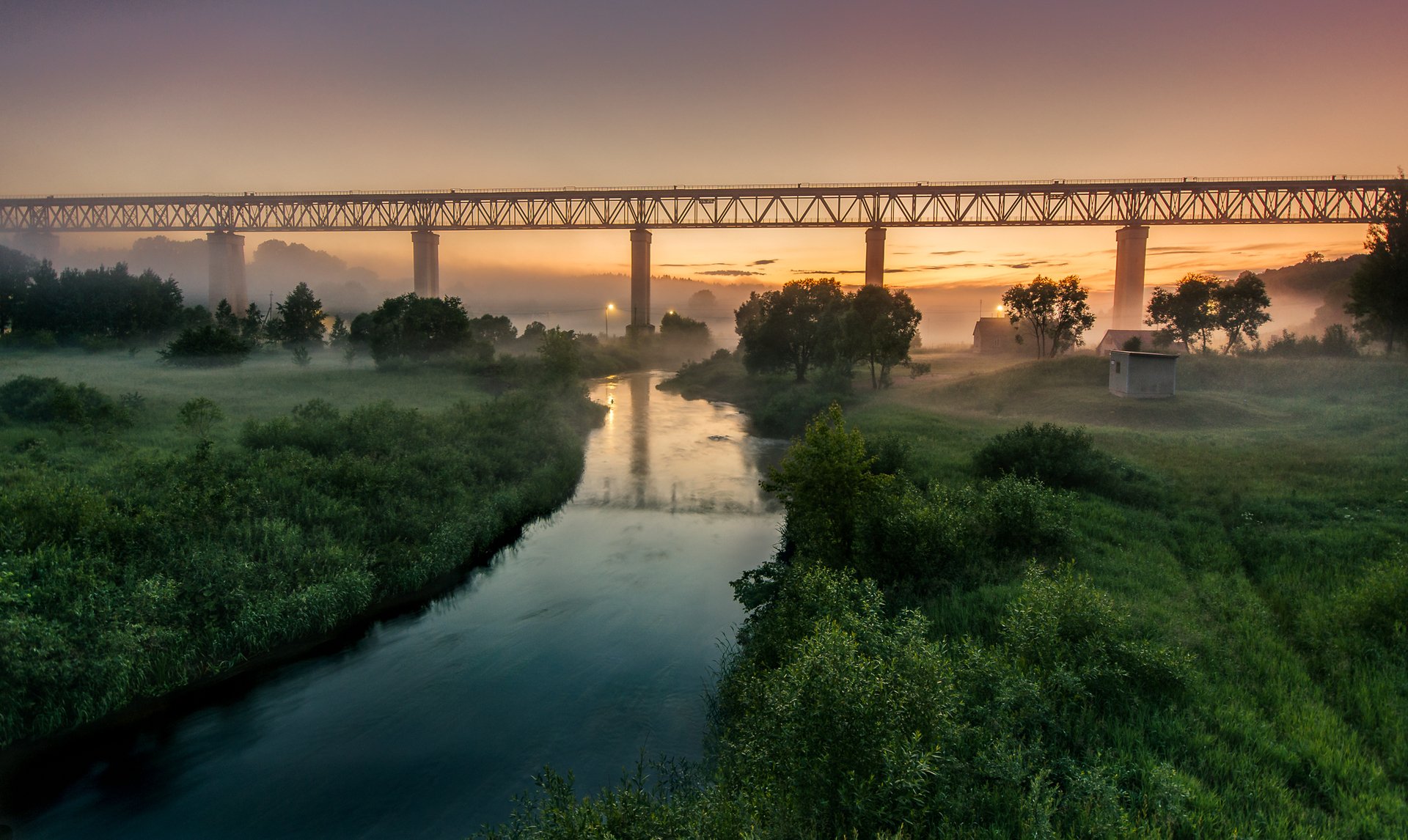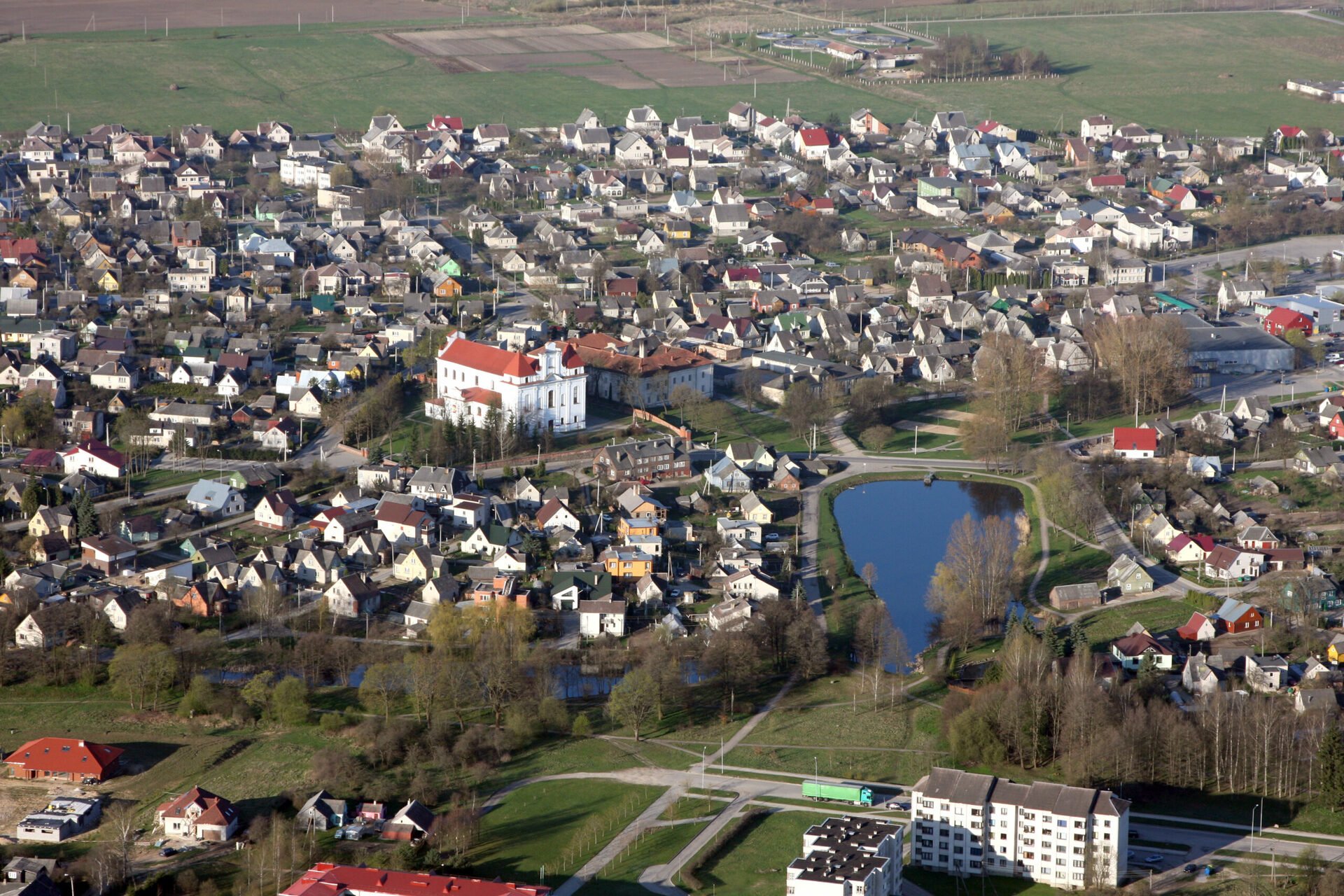RASEINIAI
Raseiniai is one of the oldest towns in Lithuania. The legendary hillforts and yet forgotten nearby ancient burial places which scattered in the valleys of the river Dubysa is the perfect evidence of the fact that people have lived by the river since the ancient times.
The Year 1253 The King of Lithuania Mindaugas was the first to mention Raseiniai, Ariogala, Betygala and Viduklė in his July Act in 1253. Showing the appreciation to the Livonian Order, Mindaugas gave a half of Raseiniai as a gift, including Laukuva, Betygala, Ariogala, Dainava and other lands. The growth of the town began after the wars with the crusaders had ended.
15th-17th c. The first Roman Catholic churches in Betygala, Ariogala, Viduklė and Raseiniai were built during the Samogitian baptism in 1416. Raseiniai became the centre of the powiat (county) in the 15th century, the political and economic centre, also the capital of Samogitia since 1574. There is a record – “Raseiniai – the capital of Samogitia” (Rosienie Samogitiae Metropolis) on the map of the Grand Duchy of Lithuania, published by Mikalojus Radvila Našlaitėlis in 1613. The Dominican Order was invited to settle in Raseiniai by the bishop Jurgis Tiškevičius in 1642.
18th c. The brick baroque style church and the monastery were built in the 18th century. Ariogala and Raseiniai were given the Magdeburg rights and coats of arms by the last king of Lithuania and Poland Stanislaw August Poniatowski in 1792.
The Year 1831 The first flag of rebellion in Lithuania was raised in March 1831 in Raseiniai.
19th c. Raseiniai was one of the biggest cities in Lithuania with 12 thousand residents and two-thirds of them were the Jews.
The 1st Half of the 20th c. At the end of World War I on 13th November 1918 townspeople gathered to elect the local government and started rebuilding the devastated region. The Lithuania Independence monument, later called Žemaitis, symbolising the Samogitian strength and persistence in the fight for independence, was built in the former market square in 1934 (author V. Grybas).

The 2nd Half of the 20th c. At the end of World War II Raseiniai changed the “master” for several times and finally was burnt down and devastated. During the Soviet Occupation, the partisan resistance was extremely active in Raseiniai region. Not far from Ariogala, in Daugėliškiai forest, the headquarters of all Prisikėlimas military district was established in 1948. After declaring the Independence of Lithuania, the annual congress of the exiles and political prisoners takes place in the Valley of Songs in Ariogala.
ŠILUVA

Šiluva is a town in Raseiniai district in the western part of Lithuania, bringing the worldwide fame to this land with the miracles that happened here, wonderful nature and peace. The history of Šiluva already begins in the 15th c. and is still associated with the Blessed Virgin Mary and her famous apparition. Today, Šiluva is a modern centre of pilgrimage of Northern and Central Europe which attracts the believers from Lithuania and other European countries. Every year on 8th-15th September the Festivities of the Nativity of the Blessed Virgin Mary (Šilinės) are held in Šiluva, thousands of pilgrims from all over the world visit this event. Art and theatre biennials, concerts, art exhibitions and other events take place.

LYDUVĖNAI
The longest and the highest railway bridge in Lithuania. 599 metres long and even 42 metres height bridge above the impressive valley of the River Dubysa, located in Dubysa Regional Park. The engineering construction having the status of the Cultural monument. It is also one of the most famous and frequently visited places not only of Lyduvėnai village, but also of the whole district. The first wooden bridge built in 1916. In 1918 it was replaced by the bridge of the reinforced concrete, but in 1944, it was exploded by the retreating German army. The permanent bridge was restored in 1951.

BETYGALA

It is one the oldest towns of Lithuania which was established by the river Dubysa. The legend has it, that the town had been established by the historical figure Palemonas from Rome. The town is famous for the monument of Vytautas the Great, the Cross of the Nation, the Church of Saint Nicholas, also called the white swan. You will get acquainted with the history of the region in the Museum of Betygala, and a warm welcome will be waiting for you in the Home of Betygala Community.
MAIRONIS MEMORIAL MUSEUM
People traveling from the birthplace of the famous Lithuanian poet Maironis to his parents’ homestead, will pass a romantic alley of birches, the spring of Maironis, small rivers of Luknė and Sandrava. All of these were the inspirations of the lyrics of Maironis. The foundation of the house, the widest in Lithuania well with a sweep and the building used for storing agricultural implements are the main exhibits.

The museum is set in the sister’s house at the place of the former parents’ homestead. The original old garden and the icehouse remained, while the barn together with granary have been rebuilt. The exposition also includes the authentic belongings of the family of Maironis.
AŠTUONRATIS

The Museum of the Eight-wheeled Vehicle was established to honour Pšemislovas Neveravičius, the inventor of the first eight-wheeled vehicle in the world. The expositions commemorate the famous countryman, together with a number of machineries exhibits and the history of Nemakščiai, are displayed. The restored eight-wheeled vehicle is the main attraction. The Museum of the Eight-wheeled Vehicle, established by Leonas Tamulevičius, offers “The Educational Program of Samogitian Culinary Heritage, Crafts and Traditions”. The museum introduces the crafts and traditions of rural territories. The guests are treated with Kastinys (a mixture of sour cream and butter) and jacket potatoes, Čirvai (a type of pancakes) served with four type jam.
MOLAVĖNAI

The Molavėnai Hillforts is a complex of united defensive mounds, exceptional in size and complex engineering solutions. The hillforts entwined with legends and stories survived in perfect condition till these days. It is believed that the renowned castle of Pilėnai stood here in 1336. The site has historical, archaeological, environmental and cultural significance. The object is equipped with the basic recreational infrastructure, such as wooden paths, shady retreats and parking areas. The impressive performances are held on the Statehood Day on July 6th annually.

1 comment
Dear Ieva,
Many thanks for information about Raseiniai.
I would suggest you to fullfil the part with the jewish history in the 19th century especially after German occupation. It is a change point in history of this city. At least as important as the first mention of Raseiniai by Mindaugas or the Samogitian baptism. But the way You use to inform your readers about genocide on more than 9000 people is not ok. It is never enough to write about the Holocaust.
For the historical information I suggest You to contact the jewish memorial community of Lithuania.
Best regards
Dimitri
Comments are closed.